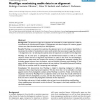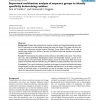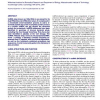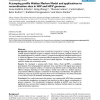172 search results - page 12 / 35 » ProtEST: protein multiple sequence alignments from expressed... |
BMCBI
2007
13 years 7 months ago
2007
Background: The presence of gaps in an alignment of nucleotide or protein sequences is often an inconvenience for bioinformatical studies. In phylogenetic and other analyses, for ...
BMCBI
2007
13 years 7 months ago
2007
Background: Proteins that evolve from a common ancestor can change functionality over time, and it is important to be able identify residues that cause this change. In this paper ...
NAR
2000
13 years 7 months ago
2000
tmRNA (also known as 10Sa RNA) is so-named for its dual tRNA-like and mRNA-like nature. It is employed in a remarkable trans-translation process to add a Cterminal peptide tag to ...
BMCBI
2006
2006
A jumping profile Hidden Markov Model and applications to recombination sites in HIV and HCV genomes
13 years 7 months ago
Background: Jumping alignments have recently been proposed as a strategy to search a given multiple sequence alignment A against a database. Instead of comparing a database sequen...
BMCBI
2005
13 years 7 months ago
2005
Background: Popular methods to reconstruct molecular phylogenies are based on multiple sequence alignments, in which addition or removal of data may change the resulting tree topo...




